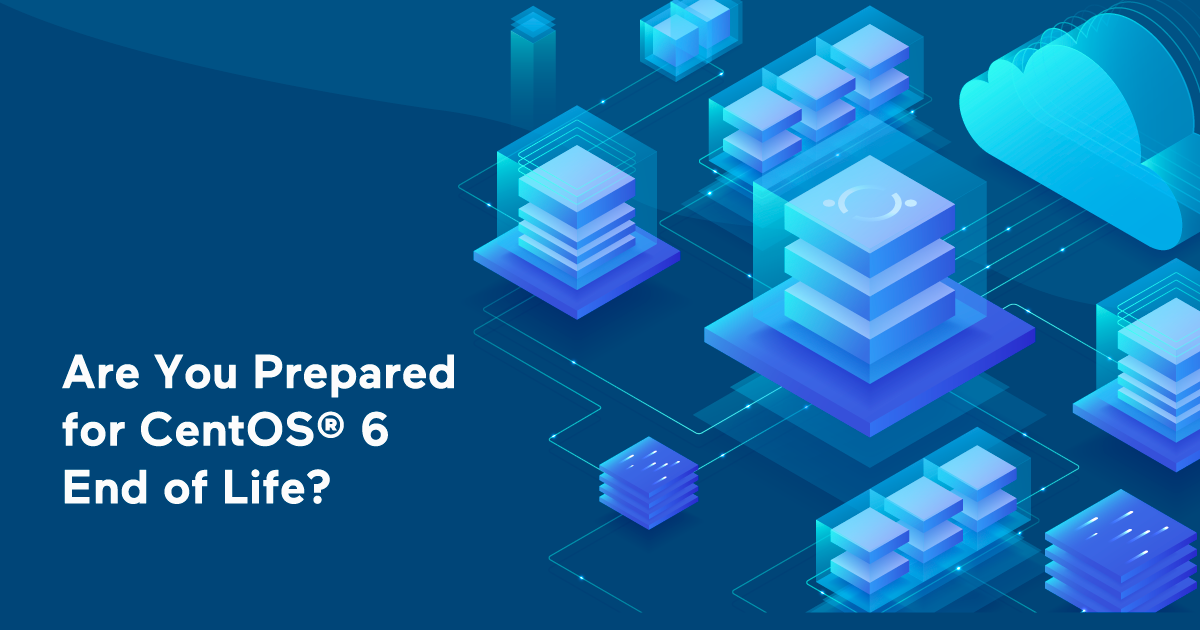Are You Prepared for CentOS® 6 End of Life?

CentOS® 6 end-of-life is coming up in November, which raises concern for any organization that has not prepared for migration to later versions. Running an end-of-life (EOL) operating system with no support or future patches leaves the server vulnerable to any zero-day attacks or future exploits with no resolution.
Updating servers to a new Linux operating system isn’t a simple endeavor. Changes must be tested in a staging environment, and all software and libraries must be compatible with the newly installed operating system. Even with its challenges, administrators traditionally had no option but to plan for migration and hope for the best, until now. Administrators were forced to upgrade an installed server operating system before its EOL date, but CloudLinux offers an alternative for CentOS migration and provides lifecycle support for CentOS 6 until June 2024. This option provides administrators extended time so that they have extra time for migration planning and execution.
CentOS 6 was released in 2011, and will reach its end of life November 30, 2020. CentOS 7 and CentOS 8 are available as an upgrade, but administrators who decide to upgrade to CentOS 7 should be aware that its end of life will be June 2024. CentOS 8 has an end of life on May 31, 2029.
Running Unsupported Operating Systems is High Risk
Leaving servers running outdated software including operating systems is a high-risk proposition that could lead to disastrous results. Some of the biggest data breaches were the result of unpatched, outdated software. Normally, developers release patches to remediate known vulnerabilities, but this process is discontinued when software reaches its end of life. Any issues with the operating system are left unsupported, and vulnerabilities are left unpatched.
Potential vulnerabilities aren’t the only issues with outdated software. The organization also faces the potential for compatibility issues. When an operating system is no longer supported, software developers no longer feel the need to ensure their applications support it. This means that any updated or patched libraries and third-party applications will no longer install and run properly on the server, which then adds even more risk for data breaches.
Migration Isn’t Easy
For inexperienced users, the obvious answer is to simply upgrade servers to the latest operating system, but administrators know that migration is not easy and leaves the server open to possible performance, compatibility, and reliability issues. By keeping the operating system status quo, the network and server environment stays much more stable, even with compatibility issues that could arise from new software installations.
Administrators can be up against numerous issues during migration to an upgraded operating system (or any software for that matter). These issues are why administrators avoid the process even when it’s critical to cybersecurity. Testing and staging are necessary during migration, but critical errors can still happen. With hundreds of servers in the mix, the issues could become a catastrophic event that could cause downtime.
Servers using older software are presumably using older hardware. Operating systems support as much hardware as necessary, but the chance of unsupported hardware and incompatible drivers could pose a problem during migration. Incompatible hardware means the server must have a hardware upgrade or roll back the upgrade.
Any critical libraries must also be tested on the new operating system or administrators risk possible freezes, crashes, or the software just simply does not run. If this software is necessary for productivity, the issue leaves administrators scrambling to find a solution or again roll back the changes.
In addition to compatibility issues, performance isn’t guaranteed with a new operating system installation either. Older servers might not have the resources to run new software efficiently without obvious performance degradation, or performance degradation could be from incompatible software. This issue is just as bad as the software freezing, as it can’t be run on a production server if it affects overall server response times and processing speed.
Extended CentOS 6 Support with CloudLinux
Take the above issues and add hundreds of servers into the mix. Large organizations with dozens of servers risk having at least one critical issue during migration even with hours of testing and quality assurance. For organizations with CentOS 6 servers without the resources or time to migrate, CloudLinux offers support to help alleviate the urgency to either upgrade servers or leave them vulnerable to future exploits.
CloudLinux CentOS 6 Extended Support service makes it possible to run the retired operating system on any server until June 2024. By using an end-of-life extended support system, administrators can protect critical servers from potential vulnerabilities while creating a migration plan for future upgrades.
How It Works
CloudLinux offers continuing updates and support for CentOS 6. There is no need for any changes to your servers — a simple single command to add a new repository file is all that’s needed. After the repository is added, CloudLinux continues to provide updates and security patches until June 2024.
Updates to the core operating system aren’t the only benefits. With extended CentOS 6 support, organizations also get updates to software such as PHP, Apache, glibc, MySQL, OpenSSL, OpenSSH, Zlib, and several others.
Conclusion
You don’t need to rush migration to CentOS 7 or 8 with Extended Lifecycle support from CloudLinux. You get peace of mind knowing the updates and patches for CentOS 6 will continue for years to come. To find out more, contact us and we’ll help you get started.



.jpeg)



